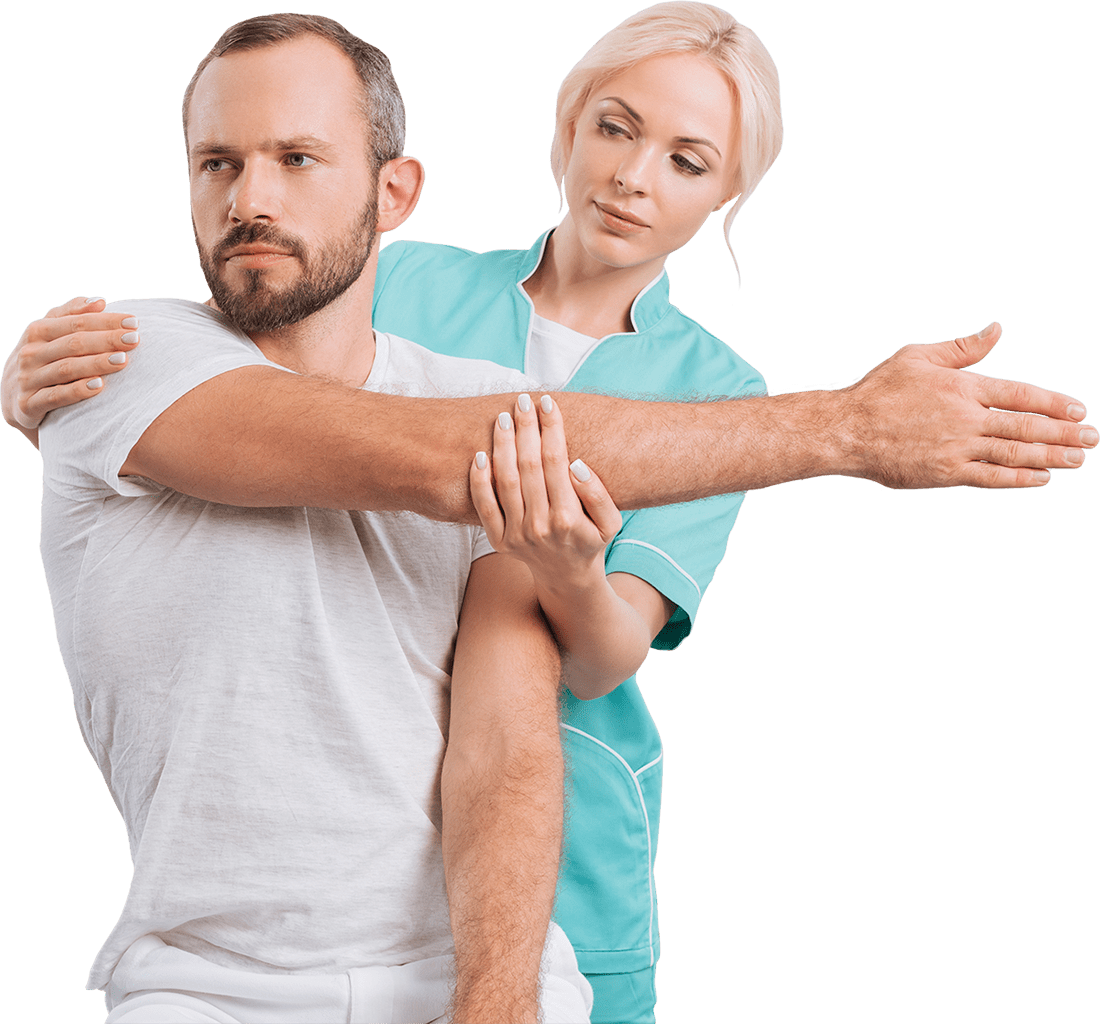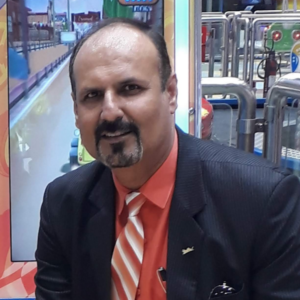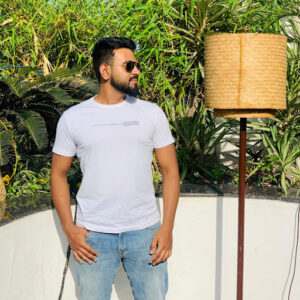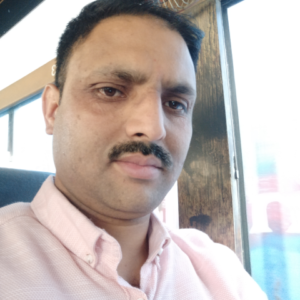Geriatric Physiotherapy
Geriatric Physiotherapy is the branch which involves working with the aged persons. Working as a Physiotherapist with elderly people is challenging and it covers a wide area of problems concerning the old age.
Our specialist Physiotherapists have depth knowledge and aim to provide a friendly, professional and interactive physiotherapy service to meet the needs of all old aged persons.
Goal of Geriatric Physiotherapy
As people grow older, many problems attack them because of ageing, lack of movement, arthritis, osteoporosis, neural weakness, and balance disorders. Elderly people are more prone to pain and injuries as they lose muscle control and balance.
So the main goals of physiotherapy is to-
Benefits of Physiotherapy for elderly peoples
• Reducing pain and discomfort
• Improving strength, flexibility and control of the muscles
• Improving Joint range of motion
• Improving overall functionality
• Reducing Future risks
Physiotherapy plays a key role in elderly patient’s lives by enabling them to use their body systems to perform their daily needs activities.
It is important to recognize that elderly people are prone to injuries; our specialist Physiotherapists must not only have specific knowledge of treating and interacting with them, but must also have a thorough understanding of their needs.
Physiotherapy treatment may include
Education: Educating the elderly people about the movement and daily needs activities is much more important. Elderly people don’t want to do much more activities because of pain, dis-balance or weakness of muscles and they lose hope, so educating and encouraging them is much more important.
Range of Motion: Aged people don’t do many activities and their range of motion (ROM) decreases and they feel restrictions in their daily activities (ADLs). So ROM exercises should be initiated to avoid any joint fusion and pain. It will make their health better and improve their ADLs. Once range is achieved, their morals definitely will go down.
Strength and flexibility: Strength exercises are activities that make your muscle stronger. It will increase your strength, size, power and endurance. Strengthening can be achieved by using your body weight or external weights. Flexibility is improving your joints and muscles to perform full joint movement. Flexibility can be achieved by stretching some tight muscles. These strength and flexibility exercises reduce chances of joint fusion and slow down the risks of bone and muscle loss.
Posture correction: Correcting posture in aged people is essential for their look as well as to prevent posture related pain, injuries or fatigue. A good posture will enhance their performance in their daily living activities. Doing some postural training will align their body, muscle balance, body mechanics and postural habits.
Balance and coordination: Balance training is the ability to maintain line of gravity within the base of support. In older ages, balance and coordination is lost because of muscle weakness and joint fusion. These exercises prevent chances of fall or injury, improve posture and enhance recovery.

Common Geriatric Conditions
- Alzheimer’s disease
- Ataxia
- Axonopathy
- Ankylosing Spondylosis
- Back Pain
- Balance and Coordination
- Brachial Plexus Injuries
- Deep Vein Thrombosis (DVT)
- Diabetic Neuropathy
- Fractures
- Frozen Shoulder
- Gait Disorders
- General Weakness
- Head Injuries
- Joints Pain
- Knee Pain
- Lower Motor Neuron Disease
- Multiple Sclerosis
- Muscle Weakness
- Fatigue
- Muscular Dystrophy
- Myasthenia gravis
- Neck Pain
- Neuropathies
- Osteoarthritis OA)
- Osteopenia
- Osteoporosis
- Paralysis
- Parkinson’s disease
- Peripheral Nerve Injuries
- Poly Neuropathy
- Postural Impairment
- Respiratory Disorders
- Rheumatoid Arthritis (RA)
- Spasticity
- Spinal Cord Injuries (SCI)
- Stroke
- Surgeries
- Torticollis
- Tremors
- Upper Motor Neuron Disease
Frequently Asked Questions
Elderly peoples are prone to injuries and their movements are less. Physiotherapy helps them to regain their movements, reducing pain and inflammation, keeping them active.
Yes, physiotherapy plays a vital role in elderly peoples because they are mostly bound to their place and their activities are limited. Because of limited movements, their muscles get stiff and they face a postural issues. So to keep them mobile and active, physiotherapy gives them confidence in their movements.
Elderly peoples are more prone to injuries because of poor muscle control and balance and coordination issues. Exercise prescription for muscle strength and flexibility, Range of motion activities, Postural training, and education to avoid future injuries, are required in physiotherapy for elderly peoples.
A Geriatric Physiotherapist helps the elderly people to get back their full range of motion of joints, improves muscle strength and flexibility and mainly the correction of posture because mostly elder peoples face postural problems.
What our client says!

I recently visited here for physiotherapy, and I had a great experience. The staff were professional and knowledgeable, ensuring that I understood my treatment plan and exercises. The clinic was clean and well-organized, creating a welcoming environment.

I recently had a physiotherapy session at "YesPhysio Physiotherapy & Sports Rehab Clinic", and it was an excellent experience. The staff were friendly and knowledgeable, making me feel comfortable and well-cared for. The treatment was effective, and I felt much better and more relaxed after just one session. Highly recommend!

Staff having sound knowledge related to physiotherapy, staff is skilled and cooperative and hardworking. Clinic is having updated equipment and equipped with all necessary accessories which need during physiotherapy. My personal experience was good and I do recommend to all.

One of the best physiotherapists in Zirakpur, Balkar Ji is knowledgeable and treated my wrist and knee pain with advanced skills. Highly recommended

I had a tear in rotator cuff and balkar sir helped in my rehab, he was great with his work and the environment is very comfortable , I really recommend it. Great work.

Best physio clinic in town, Doctor balkar treated my tennis elbow, rotator cuff and lower back bulge. Highly recommended

According to me it is the Best Physiotherapy Clinic in Zirakpur and for the needful person they provide Physiotherapy at Home also.

They are giving great service among the people and i must they are very humble and well trained staff

